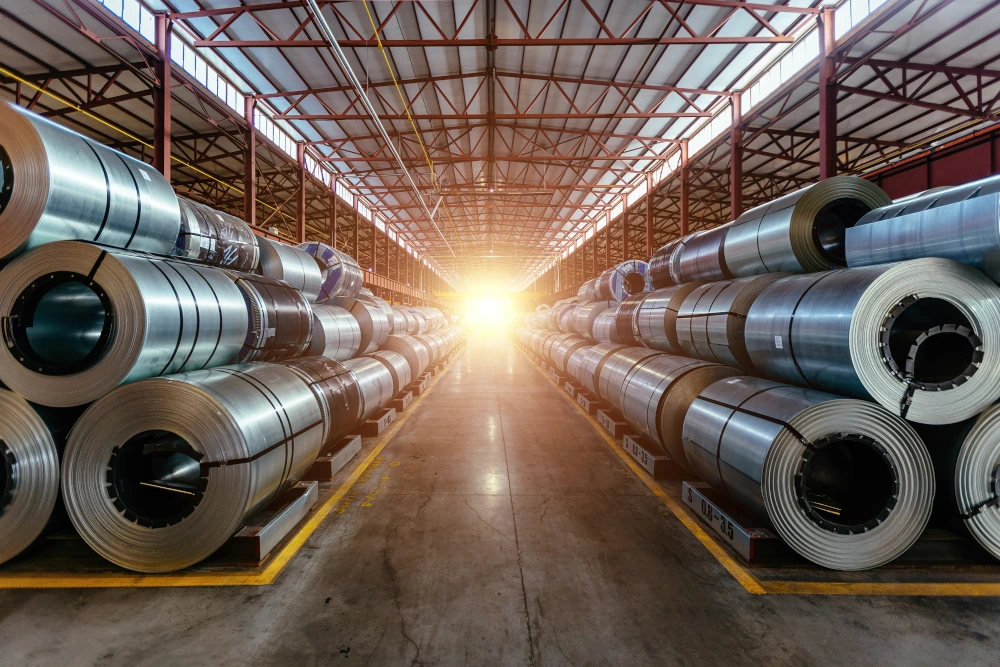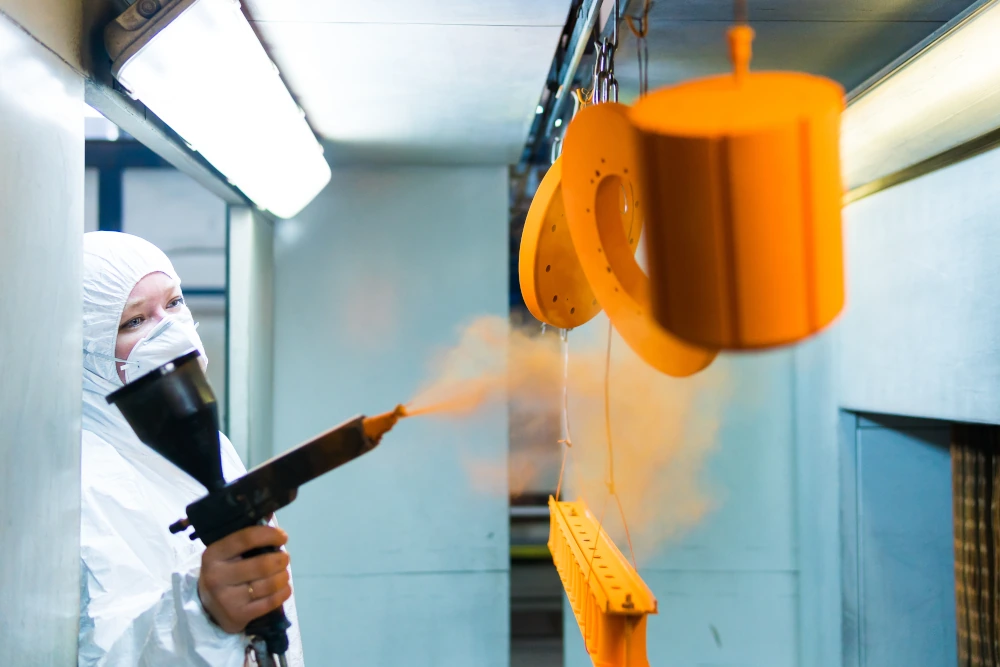Steel is one of the most versatile and useful materials on the planet. Steel mainly consists of iron (Fe) and carbon (C), but the modern steel is more complex than that. Steel’s characteristics and strength are affected by the concentration of carbon and iron or the inclusion of other elements, which allows steel to be used in an infinite number of scenarios.
Most people believe that steel is just a set combination of iron and carbon. But there are in fact over 3,500 different grades of steel! You can determine the grade of steel by analyzing the quantity of carbon in it, the other alloying elements it includes as well as how it’s processed.
In this article, we’ll discuss the four different types of steel, along with how they’re classified, the various steel grades and the methods of heat treatment used to improve steel’s mechanical properties.

The four types of steel
Steel is graded and classified into four groups:
- Carbon steels
- Alloy steels
- Stainless steels
- Tool steels
What are these many forms of steel made of, and what purpose do they serve? Let’s find out!
Carbon steels
Aside from carbon and iron, carbon steels contain only trace amounts of other components. Carbon steels are the most common of the four steel grades, accounting for 90% of total steel production! Carbon steel is classified into three subgroups based on the amount of carbon in the metal:
- Low carbon steels/mild steels (up to 0.3% carbon)
- Medium carbon steels (0.3–0.6% carbon)
- High carbon steels (more than 0.6% carbon)
Find out more about carbon steels in our mild steel vs. carbon steel guide!
Companies frequently produce these steels in large quantities since they are relatively inexpensive and robust enough to be used in large-scale construction.
Alloy steels
Alloy steels are made by combining steel with additional alloying elements such as nickel, copper, chromium and/or aluminum. Combining these elements improves the strength, ductility , corrosion resistance and machinability of the steel.

Stainless steels
Stainless steel grades are alloyed with 10–20% chromium as well as nickel, silicon, manganese, and carbon. Because of their increased capacity to survive adverse weather these steels have phenomenally high corrosion resistance and are safe to use in outdoor construction. Stainless steel grades are also commonly used in electrical devices.
For example, 304 stainless steel is widely sought after for its ability to withstand the environment while keeping electrical materials safe.
While different stainless steel grades, including 304 stainless steel, have a place in buildings, stainless steel is more often sought after for its sanitary properties. These steels are widely found in medical devices, pipes, pressure vessels, cutting instruments and food processing machinery.

Tool steels
Tool steels , as the name suggests, excel in cutting and drilling equipment. The presence of tungsten, molybdenum, cobalt and vanadium helps improve heat resistance and general durability. And because they hold their shape even under heavy use, they are the preferred material for most hand tools. Learn how tool steel is made here !

Steel classifications
Beyond the four groups, steel can also be classified based on a different variables including:
- Composition : carbon range, alloy, stainless, etc.
- Finishing method : hot rolled, cold rolled, cold finished, etc.
- Production method : electric furnace, continuous cast, etc.
- Microstructure : ferritic, pearlitic, martensitic, etc.
- Physical strength : per ASTM standards
- De-oxidation process : killed or semi-killed
- Heat treatment : annealed, tempered, etc.
- Quality nomenclature : commercial quality, pressure vessel quality, drawing quality, etc.
Steel grading systems
Steel grading systems allow us to categorize steel varieties based on their use case. For example, the rate at which steel is cooled by steel manufacturers might affect its molecular strength. The length of time they can maintain steel at critical temperatures throughout the cooling process is also essential. In reality, two sheets of steel with the same alloy content can have various grades depending on the heat-treatment technique.
The ASTM Grading System assigns each metal a letter prefix based on its general category (“A” for iron-based alloys and steel materials) as well as a sequentially allocated number corresponding to that metal’s unique qualities.
In contrast, for classification, the SAE Grading System employs a four-digit number. The first two figures represent the steel type and alloying element concentration, while the latter two digits indicate the metal’s carbon concentration.
Steel grading standards are frequently used to assure the quality and consistency of materials by scientists, engineers, architects, automotive engineers and government bodies. These standards provide consistent terminology for communicating the properties of steel in great detail, as well as directing product manufacturers toward suitable processing and application techniques.
Grades of steel
Steel grading systems consider chemical composition, treatment, and mechanical qualities to help fabricators choose the best product for their application. Aside from the actual percentage of carbon and other alloys in the material, the microstructure has a considerable impact on steel’s mechanical properties.
Microstructure
It is critical to understand the meaning of microstructure and how steel microstructure can be modified through hot and cold forming as well as post-manufacturing. These methods can be used to create goods with unique mechanical qualities. Manipulation of chemical composition and microstructure, on the other hand, will result in a trade-off between distinct qualities.
The microstructure of a substance is the way molecules are bonded together with forces acting between them. Heating and cooling operations are used to shift the microstructure from one form to another, affecting the material’s characteristics.
The microstructure cannot be seen with the human eye but can be studied under a microscope. Steel can have a variety of microstructures, including ferrite , pearlite , martensite , cementite , and austenite .
Ferrite
The molecular structure of pure iron at normal temperature is referred to as ferrite. This microstructure will also be found in steel with very low carbon content. A body-centered cubic (BCC) crystal structure is the ferrite’s distinguishing feature. The molecules in BCC are more loosely packed than in other microstructures that contain more molecules per cube.
At room temperature, however, the quantity of carbon that may be supplied without affecting the ferrite microstructure is limited to 0.006%.
Austenite
Austenite is a microstructure generated when iron-based alloys are heated over 1500 degrees Fahrenheit but below 1800 degrees Fahrenheit (982 degrees Celsius). If the correct alloy, such as nickel, is present in the steel, the material will retain its microstructure even after cooling.
Austenite is distinguished by its face-centered cubic (FCC) crystal structure. The molecules in austenite are more densely packed than those in ferrite. Austenite, a common stainless steel microstructure, can contain up to 2% carbon.
Cementite
When carbon steel is heated to austenite temperatures and subsequently cooled without any alloy present to maintain the austenite shape, the microstructure reverts to ferrite.
However, if the carbon level exceeds 0.006%, the excess carbon atoms bond with iron to create iron carbide (Fe3C), also known as cementite. Cementite does not form on its own since a portion of the material is ferrite.
Pearlite
Pearlite is a laminated material composed of alternating layers of ferrite and cementite. It happens when steel is progressively cooled, generating a eutectic combination. A eutectic mixture occurs when two molten materials crystallize at the same time. Under these conditions, ferrite and cementite form concurrently, resulting in alternating layers within the microstructure.
Martensite
Martensite has a tetragonal crystalline structure that is body-centered. This microcrystalline form is achieved by rapidly cooling steel, which traps carbon atoms inside the iron lattice. The end product is a needle-like iron and carbon structure. Steel with a martensite microcrystalline structure is typically a low-carbon steel alloy with about 12% chromium content.
Hot and cold forming
To prevent corrosion, molten steel must be shaped into its final shape and then finished. Steel is often cast in machine-ready shapes such as blooms, billets and slabs. Rolling is then used to shape the casts. Depending on the material and intended application, rolling can be done hot, warm or cold.
Compression deformation is done during rolling by using two work rolls. The rolls rotate quickly, pulling and squeezing the steel between them.
Cold forming
Cold forming is the process of rolling steel at temperatures lower than its recrystallization temperature. The pressure applied by the rolls on the steel generates dislocations in the material’s microstructure, resulting in grains in the substance.
As the number of dislocations increases, the steel gets harder and more difficult to deform. Cold rolling also creates brittleness in the steel, which can be remedied with heat treatment.
After rolling is complete, the steel pieces are finished using secondary processing techniques to increase corrosion resistance and improve their mechanical properties, such as:
- Coating
- Surface treatment
- Heat treatment
Various methods of steel heat treatment
Spheroidizing
Spheroidization happens when carbon steel is heated to 1290°F (699°C) for 30 hours. The pearlite microstructure’s cementite layers are changed into spheroid shapes, resulting in the softest and most ductile form of steel.
Full annealing
Carbon steel is annealed by first heating slightly beyond the upper critical temperature for an hour, then at a rate of around 36°F (2°C) per hour. This procedure yields a coarse pearlitic structure that is flexible and free of internal tensions.
Process annealing
In cold-worked, low-carbon steel (> 0.3% C), process annealing relieves stress. For one hour, the steel is heated to 1025–1292°F (552–700°C). Before cooling, dislocations in the microstructure are corrected by reconstructing the crystal.
Isothermal annealing
High-carbon steel is heated above its upper critical temperature first. The temperature is then maintained, reduced to the lower critical temperature and maintained once again. After that, it is gradually cooled to room temperature. This procedure guarantees that the material has reached a uniform temperature and microstructure before proceeding to the next cooling stage.
Normalizing
For one hour, carbon steel is heated to the normalizing temperature. The steel has now entered the austenite phase completely. The steel is then cooled by air. Normalization results in a fine pearlitic microstructure with high strength and hardness.
Quenching
In this process, medium or carbon steel is heated to the normalizing temperature, then quenched (rapid cooling in water, brine, or oil) to the upper critical temperature. The quenching process results in a martensitic structure, which is highly hard but fragile.

Tempering quenched steel
This is the most popular heat treatment since the outcome is predictable. Quenched steel is reheated and chilled to temperatures below the lower critical point. Temperatures vary depending on the desired effect, with 298–401°F (148–205°C) being the most typical.
What is the best grade of steel?
There is no universal “best” grade of steel, as the optimal steel grade for an application depends on many factors, such as the intended usage, mechanical and physical requirements, and financial limits.
Steel grades that are regularly used and deemed the top series from each type include:
- Carbon steels : A36, A529, A572, 1020, 1045, and 4130
- Alloy steels : 4140, 4150, 4340, 9310, and 52100
- Stainless steels : 304, 316, 410, and 420
- Tool steels : D2, H13, and M2
Final thoughts
To find that optimal grade of steel for your application, visit a Metal Supermarkets location to speak to one of our metal experts. We have all your steel needs covered. You can buy as much metal as you need, quickly and easily, with no minimum order size!


